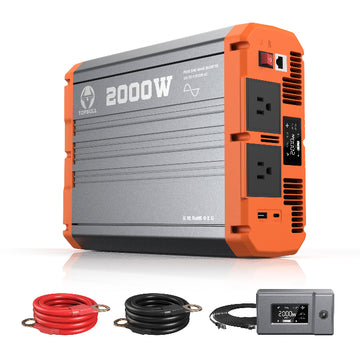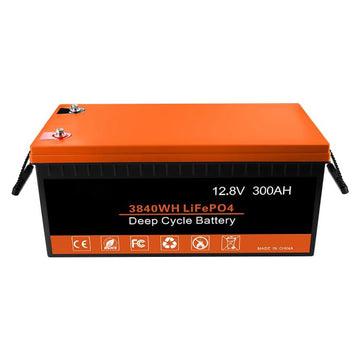Inverters generate a large amount of heat when converting DC to AC power, and if this heat is not effectively dissipated, it can lead to degradation of inverter performance or even damage to critical components. Inverter cooling systems help control this heat by dissipating it in a manner that ensures the inverter operates within an appropriate operating temperature range. This article discusses the concept of inverter coolant, different cooling methods, types of inverter coolant, selection criteria, and effective maintenance practices.
Inside this Article:
What is inverter coolant?
Inverter coolant is a cooling medium in the inverter system. It is typically used to cool the electronic components and critical parts in the inverter to ensure that the inverter maintains a proper operating temperature during operation. Without effective heat dissipation, the inverter module may be damaged.
The stability and;high-temperature resistance of the inverter coolant are very important to ensure the stability and reliability of the inverter system under various operating conditions. It is also usually corrosion resistant, preventing metal parts from corrosion inside the inverter.
Different cooling methods for inverters
Air cooling: This passive cooling method relies on natural air convection to dissipate heat. It is a simple and cost-effective solution for low-heat generation applications. However, for high-power inverters, natural cooling alone may not be sufficient, and more active cooling methods are required.
Forced air cooling: This method uses a fan to circulate air and improve heat dissipation actively. The fan can be either axial or centrifugal and can be selected based on the required airflow and pressure. Forced air cooling is more efficient than natural cooling and is suitable for inverters with high heat loads.
Liquid cooling: This method uses a pump to circulate coolant through the system. The coolant flows through cooling channels or plates in or around the drive and absorbs the heat generated during operation. Liquid cooling provides excellent thermal management, especially for high-power-density devices. However, cooling with inverter coolant is more complex, costly, and requires more maintenance. Liquid-cooled systems typically produce less noise than air-cooled systems due to the reduced or eliminated use of fans.
Heat sink design: In addition to the cooling method, the design of the inverter's cooling components (including increased heat sink area and overall airflow design) is critical to improving cooling efficiency. Heat pipe technology is used to transfer heat from the heat source to the heat sink for efficient heat dissipation. However, this method is costly and can be limited by the size and heat transfer capability of the heat pipe.
Phase change material cooling: Materials transform from a solid to a liquid state, and this transformation process absorbs heat to effectively regulate temperature. Phase change material cooling systems typically require no additional electrical equipment or operating mechanisms, simplifying system design. It is not subject to failure due to temperature changes, providing a high degree of reliability and stability.
Inverter coolant types
Water-based coolant
Glycol-based coolant: Made by adding glycol (usually a mixture of glycol and water) to water. This type of inverter coolant improves freeze and corrosion protection and reduces the risk of icing in the cooling system. Glycol-based inverter coolants are widely used in automotive and industrial inverter cooling systems. However, glycol can be corrosive to certain seal materials and components.
Oil-based coolants
Mineral oil: Mineral oil has good thermal stability and oxidation resistance and is suitable for high-temperature environments. It is commonly used in power equipment cooling systems, such as transformer oil cooling systems. It is also corrosive to some materials and not easy to handle.
Synthetic Oils: Synthetic oils have better high-temperature resistance and are not easily degraded, making them ideal for high-power inverters or harsh environments.
Hybrid Inverter Coolants
Water-organic compound hybrid inverter coolant: This type of inverter coolant improves chemical stability and corrosion resistance by mixing water with certain organic compounds, making it suitable for long-term use in inverter cooling systems.
Inverter coolant selection factors

Consider the environment in which it will be used:
The selected coolant should have an appropriate operating temperature range. For inverters used in cold environments, the inverter coolant must have good antifreeze properties to prevent freezing at low temperatures. Glycol-based coolants or fluorinated fluids have a lower freezing point and are suitable for cold environments.
For high-temperature environments, inverter coolants must have excellent thermal stability and oxidation resistance to prevent performance degradation or failure. Synthetic and silicone oils, known for their high-temperature performance, are commonly used in these applications.
Thermal conductivity:
The thermal conductivity of an inverter's coolant directly affects its cooling efficiency. The higher the thermal conductivity, the better the cooling. Water-based coolants, such as glycol-based inverter coolants, typically have a high thermal conductivity, making them suitable for applications that require efficient cooling.
Corrosion resistance:
Choose a coolant with good corrosion resistance to ensure that the metals and seals inside the inverter system are not affected by corrosion, thereby extending the life of the equipment.
Material compatibility:
Inverter coolants must be compatible with the various materials inside the inverter, including aluminum, stainless steel, copper, brass, PVC, EPDM, and NBR. Check the inverter manufacturer's recommended fluid to ensure compatibility with the inverter and its cooling system materials.
Environmental considerations:
The chemical composition of the inverter coolant should be environmentally friendly, not harmful to the atmosphere, and meet applicable environmental standards.
Cost considerations:
When selecting an inverter coolant, you must consider its performance, quality, and cost to select a coolant that fits your budget and meets your needs.
Maintenance and longevity:
The coolant you choose should be easy to maintain, have a long service life, and have low maintenance costs. Some inverter coolants have up to a 5-year warranty and do not require replacement, while others last longer, reducing the frequency and cost of maintenance.
How to maintain the inverter coolant system
Check regularly:
Regularly checking the condition of your inverter coolant, including its color, contamination, and pH level, is a good way to maintain your inverter. If the coolant appears abnormal, such as cloudy or dark, it may indicate oxidation or contamination. Metal rust or oil contamination can cause these color changes and require the coolant to be drained and replaced immediately after the filling and draining procedure.
Check the coolant level to make sure it is within the proper range and top off if necessary.
Check the operating condition of cooling system components such as radiators, pumps, valves, etc. to ensure proper operation.
Cleaning and maintenance:
Clean the radiator surface regularly to ensure good heat dissipation and to prevent dust and dirt from affecting cooling performance.
Flush the cooling system periodically to remove deposits and debris from the cooling system.
Temperature monitoring:
Monitor the operating temperature of the drive to ensure that it remains within the proper operating range. If overheating is detected, check the ventilation to ensure that it is well-ventilated to extend the life of the inverter.
What happens when inverter coolant is low?
Low inverter coolant reduces cooling efficiency and the inverter system may not be able to dissipate heat effectively. The inverter operating in an overheated state may result in unstable system operation, performance problems, or even system failure. If the inverter coolant level is low, check the coolant level immediately and top up as necessary.

















